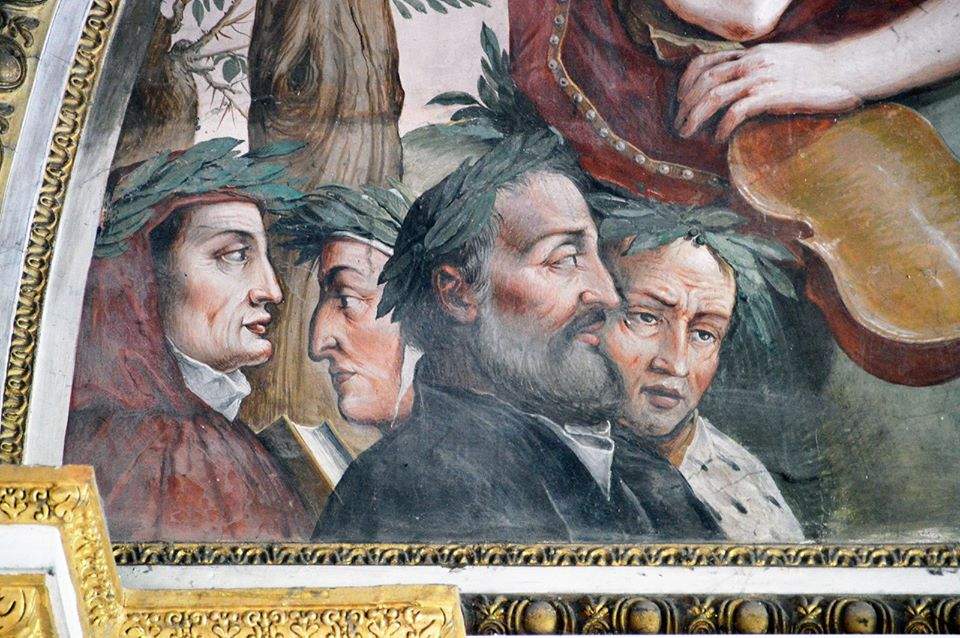Palazzo Ducale in Mantua pays tribute toAlighieri on the occasion of the first Dante Tuesday. Articles dedicated to the Supreme Poet will be posted on its website and social channels, as there is no shortage of references to Dante in the palace.
In the Mirror Gallery, for example, there is a portrait of him: the frescoes, which date from around 1618, were created by various painters. Two pupils of Guido Reni decorated part of the vault, while another group painted the walls, lunettes, and friezes. The detail in which some poets, including Dante, are depicted is the work of Antonio Maria Viani’s workshop.
Other links between Dante and Mantua are found in the Gonzaga collection. At the time of Francesco I, the 1407 inventory reports the presence of no less than two copies of the Divine Comedy among the works in the Gonzaga family’s possession. Item No. 1 and No. 2 of the list “...librorum in lingua vulgari” reads the words “primo liber Dantis glosatus” and “Item Dantes,” which are followed by the celebrated quotation of the incipit “Nel mezzo del camin di nostra vita...” that leaves no doubt about the work in question.
Obviously, the relationship between the poet and the city is further strengthened by the origins of Virgil, Dante’s guide in the otherworldly journey, namely in Inferno and the ascent of Purgatory. Publius Virgilius Maron was born in Andes, near Mantua, in 70 BC and died in Brindisi in 19 BC.
A square in Mantua, Piazza Virgiliana, is also dedicated to Virgil, where a monument is erected by Luca Beltrami and Emilio Quadrelli, inaugurated in 1927.
Finally, did Dante ever stay in Mantua? The question is controversial and related to a late work attributed to the Supreme Poet. The Quaestio de aqua et terra is a transcript of a speech in public debate that occurred in the church of Sant’Elena in Verona on January 20, 1320. Here Dante is said to have clarified to a large audience of learned and influential people certain themes related to his conception of the cosmos. Scholars do not all agree, but if the manuscript was indeed written by Dante himself, it would certify his stay in Mantua, as explicitly stated in the incipit: “Manifestum sit omnibus vobis quod, existente me Mantue, questio quaedam exorta est, que dilatrata multotiens ad apparentiam magis quam ad veritatem, indeterminata restabat” (“To all of you it is known how, finding myself in Mantua, a question arose that had already been debated many times, but always with arguments that had more the air of sophistry than of truth; and which, nevertheless, still remained indefinite.”).
Pictured is Dante’s portrait in the Gallery of Mirrors of the Ducal Palace in Mantua. Ph.Credit Museum of the Ducal Palace
 |
| What are the links between Dante and Mantua? Lots of insights from the Gonzaga Ducal Palace |
Warning: the translation into English of the original Italian article was created using automatic tools. We undertake to review all articles, but we do not guarantee the total absence of inaccuracies in the translation due to the program. You can find the original by clicking on the ITA button. If you find any mistake,please contact us.